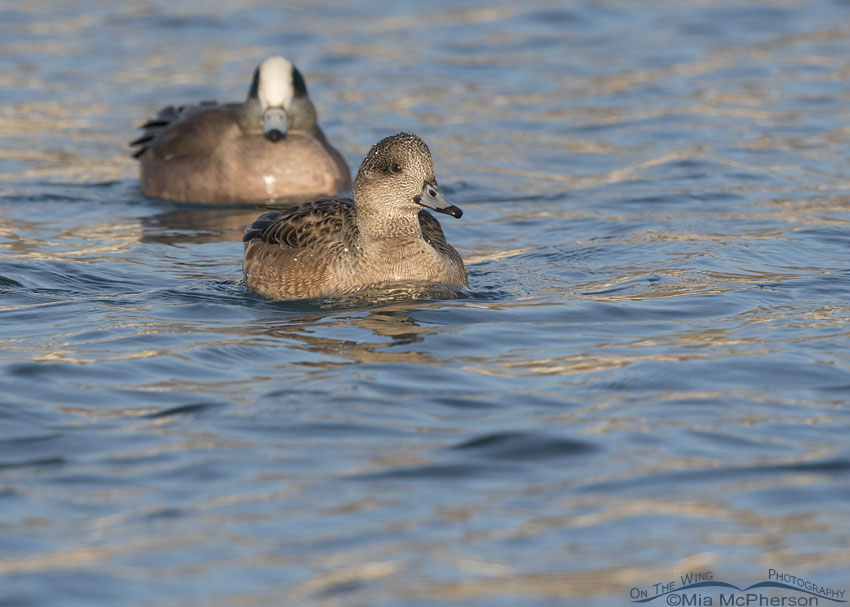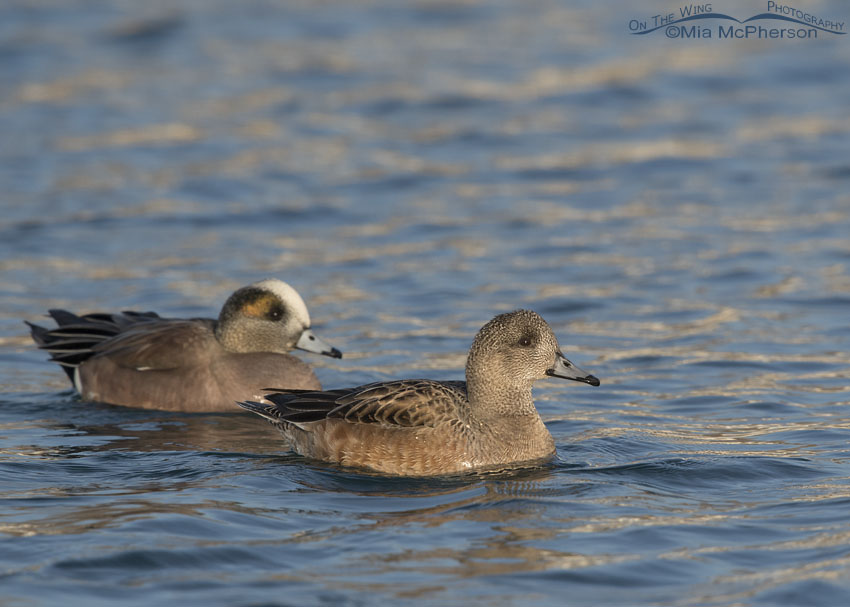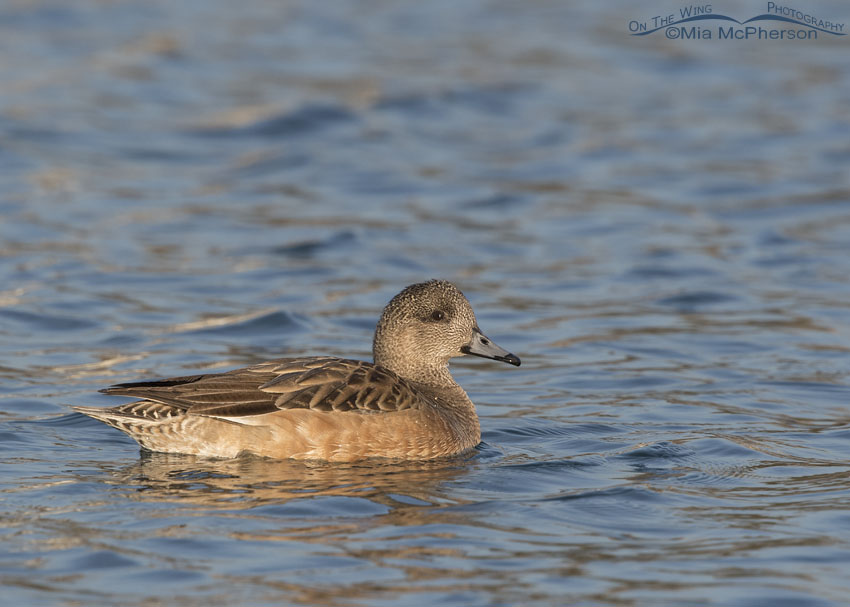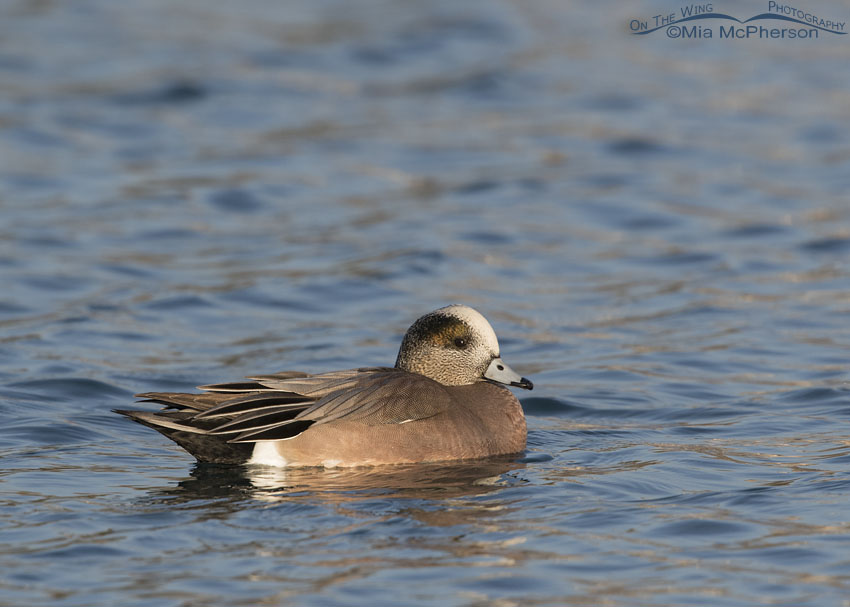 American Wigeons in Salt Lake County – Nikon D500, f7.1, 1/800, ISO 500, Nikkor 500mm VR with 1.4x TC, natural light
American Wigeons in Salt Lake County – Nikon D500, f7.1, 1/800, ISO 500, Nikkor 500mm VR with 1.4x TC, natural light
I don’t often have opportunities to photograph American Wigeons so when a pair swam up close to me last week I focused on them to take photos. The hen was in the lead when I took this image and the drake was trailing behind her. I’ve noticed this American Wigeon pair at my local pond for well over a week now but they have always been too far away to take high quality images of them until three days ago.
 Pair of American Wigeons – Nikon D500, f7.1, 1/1000, ISO 500, Nikkor 500mm VR with 1.4x TC, natural light
Pair of American Wigeons – Nikon D500, f7.1, 1/1000, ISO 500, Nikkor 500mm VR with 1.4x TC, natural light
One of the reasons I may have fewer opportunities with American Wigeons than other ducks is because this species spends more time grazing on open wetlands than foraging in the water. Usually those open wetlands are further away from me than open water is when shooting from a mobile blind.
 American Wigeon hen on a pond – Nikon D500, f7.1, 1/1000, ISO 500, Nikkor 500mm VR with 1.4x TC, natural light
American Wigeon hen on a pond – Nikon D500, f7.1, 1/1000, ISO 500, Nikkor 500mm VR with 1.4x TC, natural light
Female American Wigeons have grayish heads with white and dusky streaks, their breasts and flanks are reddish brown and their mantles are gray-brown. Their small bills are gray with a black tip.
 American Wigeon drake on a sunny afternoon – Nikon D500, f7.1, 1/1000, ISO 500, Nikkor 500mm VR with 1.4x TC, natural light
American Wigeon drake on a sunny afternoon – Nikon D500, f7.1, 1/1000, ISO 500, Nikkor 500mm VR with 1.4x TC, natural light
Male American Wigeons in breeding plumage have cream to white foreheads and crowns with a broad green patch starting behind the eyes extending to the nape, they have pinkish brown flanks, breasts and backs with a section of white in the flanks and black undertail coverts. Their bills are blue-gray with a black tip.
I wonder how long this pair of American Wigeons will hang around, I hope it is long enough for me to see more green iridescence on the drake’s head and long enough for me to take more images of them.
Life is good.
Mia
Click here to see more of my American Wigeon photos plus facts and information about this species.


Yet another charmer. Thank you.
Their call is an interesting whistle/squeak call and in the spring they are very vocal as they chase the females around.
I’ve probably seen widgeons and just had no idea what I was seeing. Until you and Ron, my duck ID skills were in the dismal range. THANK YOU for these terrific images!
We only see American Wigeons during migration here in the Niagara area. Sometimes we will see the green iridescence on the drake heads but not always.
I’ve never seen these birds either. Thank you for such a lovely introduction, Mia. I do hope they hang around for a while!
I think this is the first time I’ve seen these birds…have seen the big, amphibious plane named after them, but not the birds themselves…great shots….